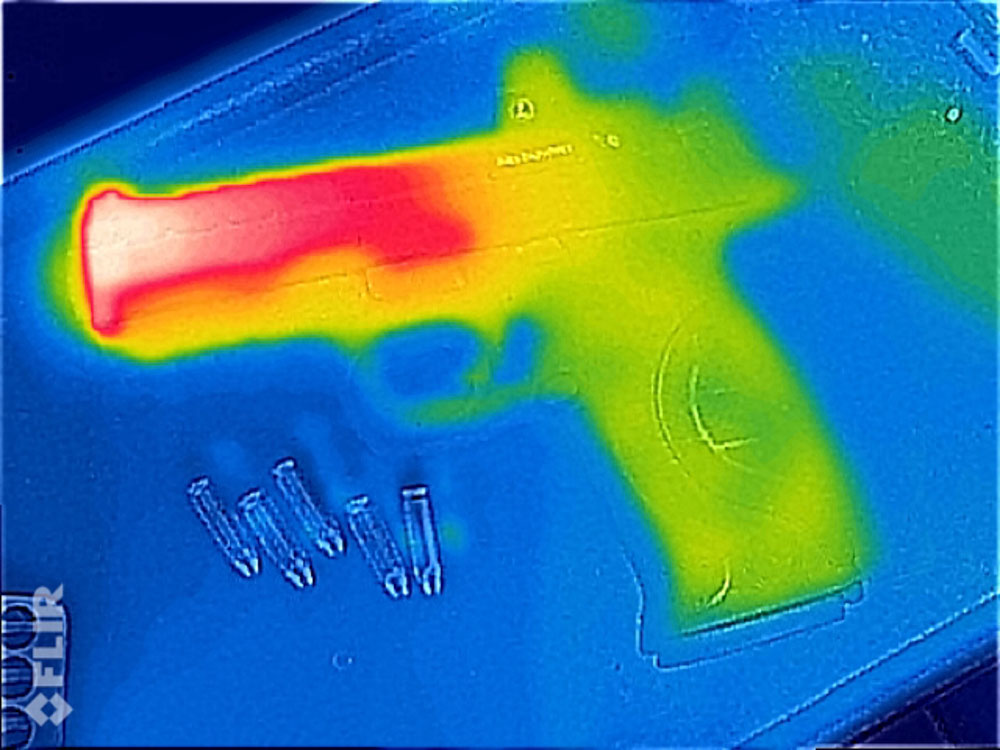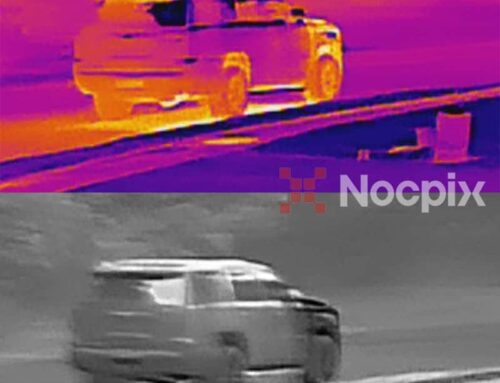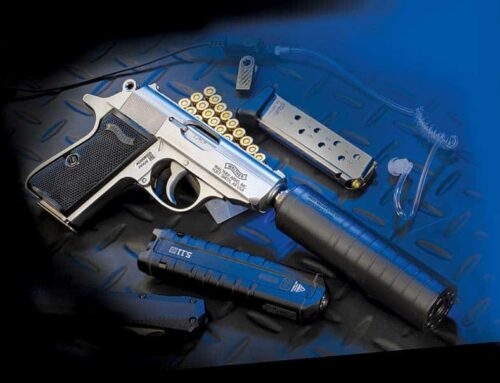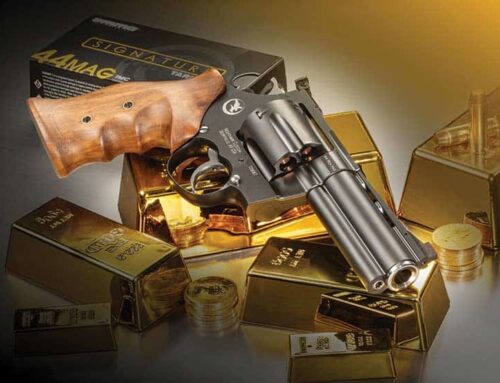
Here’s the FLIR view of the brand new Smith & Wesson M&P Pro Series CORE with compensated barrel. As you can see, it’s was just fired.
If you really want to be able to see, sometimes you have to use a lens that you can’t see through.
I recently toured one of FLIR’s manufacturing facilities and got quite the education on how to see things you can’t really see. While FLIR makes a wide variety of sensing gear, not just infrared products, they’re most commonly known for commercial and military products that help folks see things not normally visible to the human eye. By using lenses made from exotic materials like Germanium and Zinc Selenide and adding a touch of sensing and computer image enhancement technology, FLIR products are able to present the user with a picture of the environment based on relative heat signatures, or infrared.
The hardest thing to get my head around was the fact that visible light is irrelevant to infrared imaging. You can’t see through the lenses at all, which is kind of freaky when you think about it, especially since they’re called lenses. As visible light has no effect on the infrared image, FLIR products are equally useful in daylight, darkness, and obscured visible conditions.
Everything has a temperature signature, even if that signature is a lack of temperature. Objects that do not “generate” heat still have a signature as they absorb and release heat based on environmental conditions. Every material reacts differently and even minute variances in material shape or thickness result in different relative heat levels. The result of all this is that a FLIR device can create a very accurate picture of your surroundings – regardless of ambient light conditions.
Unlike light-amplification technology like standard night vision, it’s difficult to camouflage an object from FLIR. One notable exception is glass. Infrared does not travel well through that medium, so objects behind glass are essentially invisible. For now.
I’ve been experimenting with two different pieces of FLIR gear: the FLIR Scout Handheld Night Vision Camera and the FLIR One iPhone camera.

The FLIR Scout (left) and FLIR One iPhone camera (right)
The FLIR Scout is a great product for people who enjoy outdoor activities like hunting, camping, hiking and critter watching. As we’ll see, it has a variety of other interesting uses. A monocular, hand-held device, it offers different modes of heat map display including InstAlert options that highlight the hottest objects in bright red.
The FLIR One is a hardware and software combination that turns your iPhone into an infrared-enabled camera. The case contains a rechargeable battery and two cameras: one IR and the other optical. The software combines input from the two cameras to generate a representation of what it sees based on infrared signature and whatever it can detect optically.
Rather than talk about features, let’s take a look at some of the uses I found for these two products.
Spot game
The FLIR Scout base model I tested is capable of spotting a man-sized target at distances up to 350 yards. I believe it. During my informal tinkering, I spotted the doe shown here at a distance of 80+ yards and she was bedded down in a brushy area – completely invisible to the naked eye. This photo was taken in the dark but would have looked the same if taken in broad daylight.

A bedded-down doe at a range of about 80 yards.
The InstAlert feature of the FLIR Scout has four intensity modes. If you crank up the sensitivity, as in the photo above, you’ll see “warmer” spots on other objects besides living things. You can easily see moving animals at distances up to a couple hundred yards.
Measure temperature of an object without having to touch it
Jeff doesn’t know this yet, but I’m using him as an example of how the FLIR One can remotely measure the temperature of an object in addition to generating an infrared image representation. As you can see, Jeff has warmed his shirt up to 74.9 degrees by working diligently on his laptop. I’m not implying that I treat Jeff as an object…

I felt compelled to measure the temperature of this object…








Leave A Comment